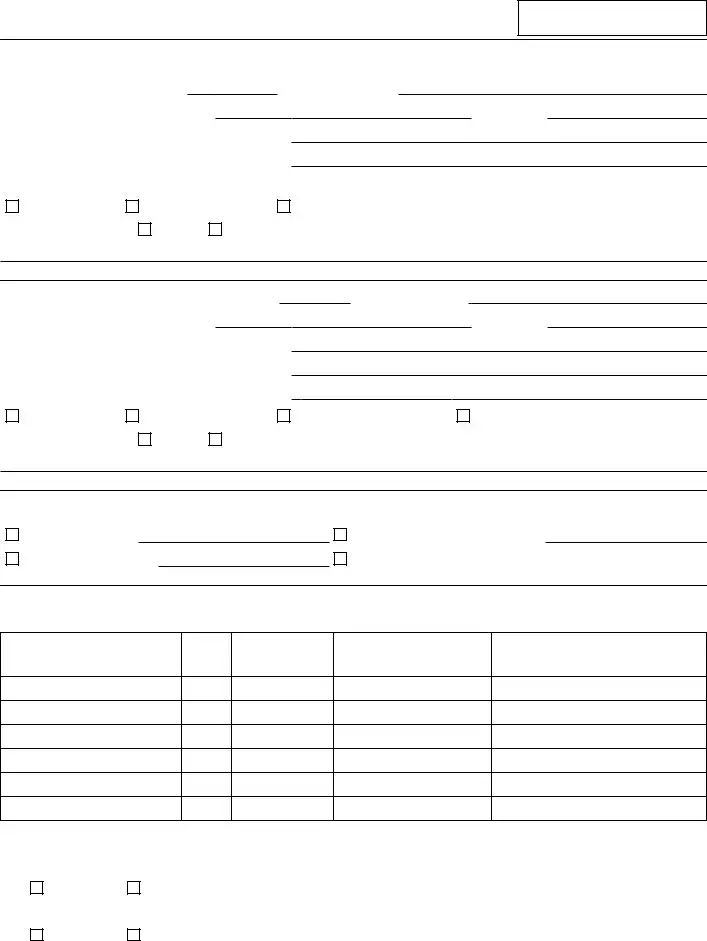IN THIS CASE, THE APPLICANT IS CLAIMING DIVORCE ONLY.
TO THE RESPONDENT(S): A COURT CASE FOR DIVORCE HAS BEEN STARTED AGAINST YOU IN THIS COURT. THE DETAILS ARE SET OUT ON THE ATTACHED PAGES.
THIS CASE IS ON THE STANDARD TRACK OF THE CASE MANAGEMENT SYSTEM. No court date has been set for this case but, if you have been served with a notice of motion, it has a court date and you or your lawyer should come to court for the motion. A case management judge will not be assigned until one of the parties asks the clerk of the court to schedule a case conference or until a motion is scheduled, whichever comes first.
IF, AFTER 365 DAYS, THE CASE HAS NOT BEEN SCHEDULED FOR TRIAL, the clerk of the court will send out a warning that the case will be dismissed within 60 days unless the parties file proof that the case has been settled or one of the parties asks for a case or a settlement conference.
IF YOU WANT TO OPPOSE ANY CLAIM IN THIS CASE, you or your lawyer must prepare an Answer (Form 10 – a blank copy should be attached), serve a copy on the applicant and file a copy in the court office with an Affidavit of Service (Form 6B). YOU HAVE ONLY 30 DAYS AFTER THIS APPLICATION IS SERVED ON YOU (60 DAYS IF
THIS APPLICATION IS SERVED ON YOU OUTSIDE CANADA OR THE UNITED STATES) TO SERVE AND FILE AN ANSWER. IF YOU DO NOT, THE CASE WILL GO AHEAD WITHOUT YOU AND THE COURT MAY MAKE AN ORDER AND ENFORCE IT AGAINST YOU.
IF YOU WANT TO MAKE A CLAIM OF YOUR OWN, you or your lawyer must fill out the claim portion in the Answer, serve a copy on the applicant(s) and file a copy in the court office with an Affidavit of Service.
·If you want to make a claim for support but do not want to make a claim for property or exclusive possession of the matrimonial home and its contents, you MUST fill out a Financial Statement (Form 13), serve a copy on the applicant(s) and file a copy in the court office.
·However, if your only claim for support is for child support in the table amount specified under the Child Support Guidelines, you do not need to fill out, serve or file a Financial Statement.
·If you want to make a claim for property or exclusive possession of the matrimonial home and its contents, whether or not it includes a claim for support, you MUST fill out a Financial Statement (Form 13.1, not Form 13), serve a copy on the applicant(s), and file a copy in the court office.
YOU SHOULD GET LEGAL ADVICE ABOUT THIS CASE RIGHT AWAY. If you cannot afford a lawyer, you may be able to get help from your local Legal Aid Ontario office. (Go to www.legalaid.on.ca/.)
FLR 8A (December 1, 2020) |
Page 1 of 6 |






 equalization of net family properties
equalization of net family properties
 exclusive possession of matrimonial home
exclusive possession of matrimonial home
 exclusive possession of contents of matrimonial home
exclusive possession of contents of matrimonial home
 freezing assets
freezing assets
 sale of family property
sale of family property
 costs
costs
 annulment of marriage
annulment of marriage
 prejudgment interest
prejudgment interest


